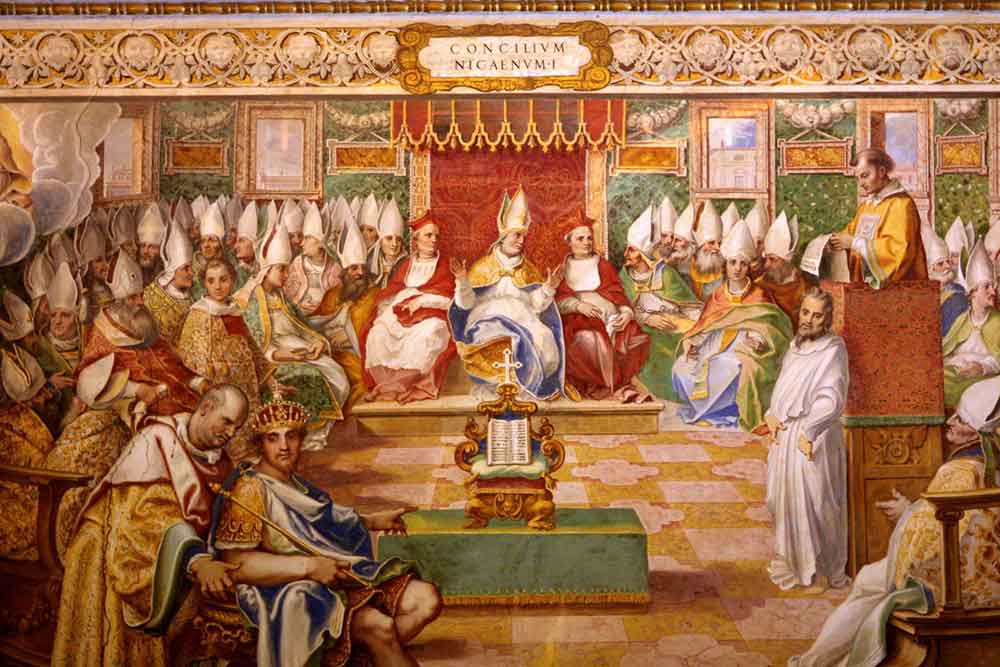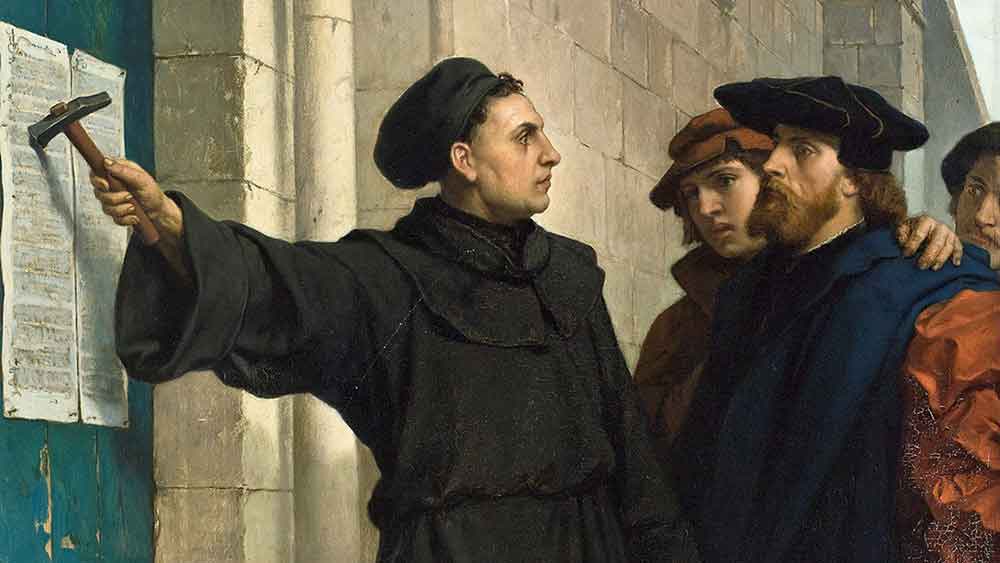What are Catholicism, Orthodoxy and Protestantism?

What are the Differences Between Catholicism, Orthodoxy and Protestantism?
One of the most curious topics in our country is the difference between the three main Christian sects: Catholicism, Orthodoxy and Protestantism. We will talk about these in this article. First of all, it would be useful to talk about the points they have in common.
More important than the features that make Catholics, Orthodox and Protestants a part of these sects are the features that make each individual belonging to these sects a Christian. These three sects basically focus on the concept of first sin (original sin), the concept of the Trinity (Father - Son - Holy Spirit), that Jesus Christ is the incarnation of God, that he came to the world for our sins, died on the cross, and was resurrected three days later. They believe that he ascended to heaven and will return to judge in the future. In short, the Holy Bible and the Nicene Declaration of Faith are the two basic sources that unite these three major sects. These are enough to be a Christian. You can access the Iznik Declaration of Faith from this 
Division of the Catholic and Orthodox Churches:
Before we start with the division between the churches, we need to talk about the history of Rome and the Church. As it is known, Christianity was born and grew within the borders of the Roman Empire in the 1st century AD. As we approached the end of the 3rd century AD, it ruled over a very large territory, starting from England and covering Western and Eastern Europe, the entire Mediterranean coast (Europe, Africa and the Middle East) and Anatolia. This made management difficult. Emperor Diocletian AD to facilitate this administration. In 285, he divided the Roman Empire into two basic administrative regions, first West and East, and then divided each basic administrative region into two, thus switching to the Tetrarchy, or quadruple government system. The territory of today's Greece and its east, that is, Eastern Rome, consisted of a Greek-speaking culture. The lands in the west of Greece consisted mostly of a Latin-speaking culture. There was already a natural difference between these two large regions due to language and culture.
Christianity, which was banned in the Roman Empire for the first 300 years of church history, AD. It ended in 306 when Constantine became emperor. Christianity had ceased to be a forbidden belief and had become legal. Afterwards, Constantine moves the capital of the Roman Empire from Rome to Constantinople, that is, Istanbul. With the growth of Christianity, the largest centers of Christianity in the world were located in Alexandria in Egypt, Antakya in Anatolia, Rome and Constantinople, that is, Istanbul. These four main centers were completely equal. They were headed by the Archbishops, and the Archbishop of Rome, also known as the Pope, was among these equal bishops.
The Fall of Western Rome

MS. In 476, Western Rome was completely destroyed by barbarian raids. Different barbarian groups that settled in the Western Roman lands of that period adopted Christianity and Latin culture. Meanwhile, the Eastern Roman Empire remained intact under the leadership of Istanbul. In the 8th century, when Islam and the Islamic State started from Arabia and conquered the Middle East, North Africa and parts of Anatolia, the two major centers of Christianity in the territory of the Eastern Roman Empire, Alexandria and Antakya, became Christian after they were captured by the Islamic State. Only Rome and Istanbul remained as centers. This would cause conflicts over authority between the two centers in the future.
MS. In 726, Eastern Roman Emperor Leo III banned icons and paintings. This period is called the Iconoclasm period. This situation caused the first major problem between Rome and Istanbul. The Bishop of Rome, that is, the Pope, opposed this ban and great debates began. This caused the Church of Rome to begin to move away from the Church of Istanbul.
Political Reasons for the Partition
MS. In 751, Rome, which was within the borders of the Eastern Roman Empire at that time, was in danger of being invaded by barbarians coming from the north. Avoiding asking for help from the Eastern Roman Empire, the Pope asked for help from the kingdom of Frankia, which was formed in today's France and Germany. With the help of the king of Frankia, he made Rome a free country under the leadership of the Pope. In this way, the Roman Church was free from the Eastern Roman Empire. This situation caused the western and eastern churches to move further away from each other. Charlemagne, who was the king of Frankia at that time, and the Pope were in close relations. MS. In 800, the Pope anointed Charlemagne as Roman Emperor despite the Eastern Roman Empire. This gave Charlemagne the spiritual authority to expand and protect his empire, while the Papacy gained political protection.
This angered the Eastern Roman Emperor, who was legally the Roman Emperor. Therefore, these decisions caused irreparable damage to the Western and Eastern churches. Although politically the east and west were separate, theoretically there was a single church. MS. When the Eastern Roman Emperor elected the Patriarch of Istanbul in 863, the Pope objected. He insisted that this appointment should be made by him. Afterwards, minor theological differences began to emerge between the eastern and western churches.
In 1053, the Pope forced the churches in the Eastern Roman Empire in Italy to adopt the Western Church's understanding of worship. This situation angered the Patriarch of Istanbul and the Patriarch had the Western churches in Istanbul closed. Later in 1054, the Pope announced that he excommunicated the Patriarch of Constantinople and the Eastern Church. In return, the Patriarch of Istanbul announced that the Pope excommunicated the Western Church. In this way the Western and Eastern Church were completely separated.
Protestantism:
After 1054, the Vatican had become more powerful than many kingdoms in Europe, both politically and militarily. This power turned the Vatican into a political authority as well as a spiritual authority. While the people were getting poorer with the taxes collected all over Europe, the church was getting richer. During this period, changes began to appear in church doctrines. John Wycliff, a priest in England in the 1300s, began to oppose some of the Vatican's doctrines. Most importantly, he wanted to translate the Bible, which was written and read only in Latin, into English. This situation was met with great reaction by the church at that time. These ideas of Wycliff were not enough to mobilize large communities, but about a hundred years later, another priest would achieve this.
In 1517, a German priest named Martin Luther pasted a 95-item thesis on the door of the Wittenberg Cathedral, especially against the Catholic beliefs of Purgatory and Indulgence (repentance and practices necessary for the cleansing of sins). Martin Luther's claim was: "Salvation comes only through faith in Jesus Christ." He claimed that there could be no salvation through good works and that there was no such concept as Purgatory (the place where it is believed that the penalty for sins is paid after death before entering heaven). This did not please the Vatican and Luther was excommunicated. Luther's followers insisted on this issue and spread these ideas. In a short time, rebellions emerged, especially covering Western and Northern Europe. The Reformation movement as we know it today began. While Martin Luther opposed only salvation-related doctrines, other theologians soon began to oppose different Catholic doctrines. As a result, the Protestant sect we know today emerged.

Catholic – Orthodox – Protestant Theological Differences
These three major denominations have the same basic beliefs as Christians, but they differ in some details. Below you can see what they have different beliefs about:
Apostolic Succession
The belief in Apostolic Succession means a transfer of authority from Jesus Christ to his apostles, from his apostles to bishops, and from them to priests. According to this belief, only bishops make appointments in the church, since authority comes in this order. Therefore, sacraments (baptism, bread-wine ritual, marriage, etc.) and teaching are implemented only by these appointed persons. While Catholic and Orthodox churches believe in this concept, Protestant churches generally do not believe in it. However, among Protestant churches, there are churches governed according to this system. While priests in Catholic churches cannot marry, priests in Orthodox churches can. There is no such rule in Protestant churches.
Pope
The Catholic Church believes that the Pope is the leader of all churches in the world, and they especially attach importance to the principle of the infallibility of the Pope. Orthodox and Protestant churches do not believe this at all.
Baptism
The Catholic Church baptizes children. After a certain age, they become full members of the church by profession of faith. The Orthodox Church also baptizes children. However, with this baptism, children become immediate members of the church. There is no child baptism in Protestant churches; However, there are also Protestant churches that believe in this practice.
Purgatory and Indulgences
The Catholic Church believes in the concepts of purgatory (temporary space) and indulgence (purification of sins by action). Purgatory is the name of the temporary place where people pay for their sins and purify themselves before going to Heaven. Orthodox and Protestant churches do not believe in these concepts.
Mary
Virgin Mary, the mother of Jesus Christ, is believed in the Catholic and Orthodox churches to be a sinless, eternal virgin (the belief that she has no children other than Jesus Christ) and that she was taken to heaven by Jesus Christ. Protestant churches see Mary as a chosen, important character. However, they do not believe in the sinless, eternal virgin and her ascension into heaven.
Art
The Catholic Church uses works of art such as paintings, sculptures and frescoes in its buildings. On the other hand, the Orthodox Church uses only paintings and mosaics. In two church traditions, these works of art are sacred because they depict Jesus Christ, saints, and Bible scenes. There is no such belief in Protestant churches.
Bread – Wine Rite
The Sacrament of Bread and Wine is called the Eucharist, the Lord's Supper, or Communion. It is the last supper that Jesus Christ had with his disciples before his crucifixion. It has an important place in worship here because of the words of Jesus Christ. Orthodox and Catholic churches believe in the real transformation of bread and wine in these rites and the real presence of Jesus Christ on the table during this rite. In most Protestant churches, this ritual is only symbolic.
































































